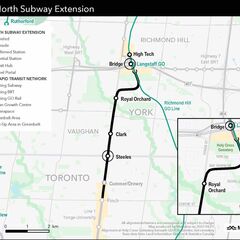A re-occurring claim in this thread has been that the Yonge Subway will be over-capacity even with the Relief Line to Sheppard and Don Mills, and that may be true in post-2050 scenarios but I was looking over the Metrolinx and City Planning documents and thinking, if we build the RL to Sheppard, we have quite a bit of breathing room. More than enough to accommodate the Yonge North extension.
The Metrolinx Report says that the Base Case 2031 scenario for the Yonge Subway is 32,300 peak hour riders and 36,000 capacity with ATC. (Or 89% volume/capacity ratio)
The Metrolinx Report found that the RL Long option to Sheppard/Don Mills took 11,600 riders off of the Yonge Subway, or more than 1/3 of peak hour riders.
The Toronto Planning report done in collaboration with University of Toronto using the updated model assumes the “Low population / medium employment” scenario. They found that 39,600 peak hour riders south of Bloor without SmartTrack or the Relief Line, and 41,600 when you add the Yonge North Extension. If we assume that the RL-Long option still takes 11,600 riders off of the Yonge subway (as per Metrolinx report), that gives us 30,000 Yonge riders. Or operating at 83% v/c ratio.
In their 2041 scenario, their 2041 base was 42,600, and 45,400 when you add the Yonge North Extension. With the RL-Long intercepting 11,600 riders, this gives us 33,800 riders. Or operating at 93% v/c ratio.
To me, it makes it pretty clear that the Relief Line to Sheppard means a Yonge North Extension, and we should advance with both projects.



















